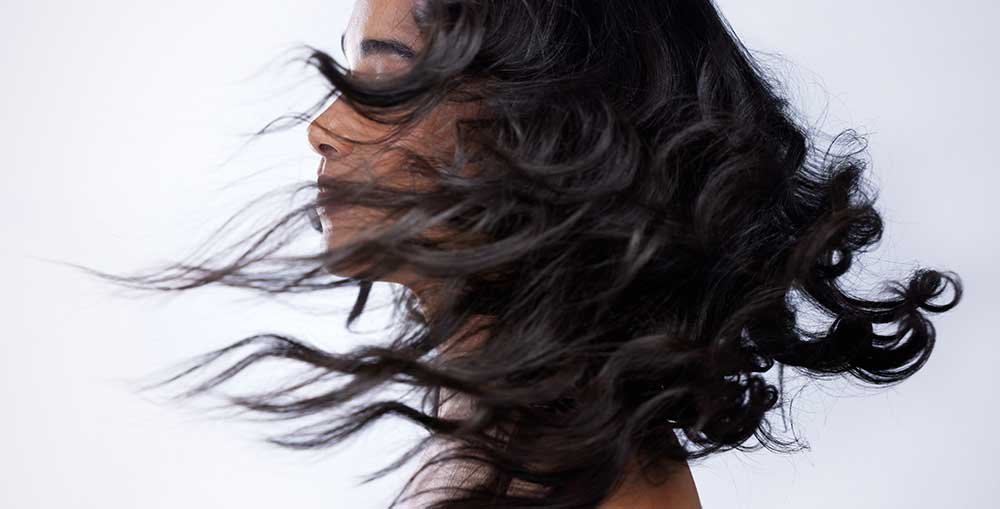Can You Curl Synthetic Hair Extensions
Curling synthetic hair extensions is a great way to add some texture and personality to your look. Whether you want loose waves, tight curls, or something in between, curling your synthetic hair extensions can help you achieve the style you desire.
But before you grab that curling iron, it's important to know if your synthetic hair extensions are heat resistant and if it's even possible to curl them in the first place.
In this article, we'll discuss the different types of synthetic hair extensions and their heat resistance levels. We'll also provide tips and tricks for curling your extensions without damaging them. So if you're ready to elevate your hairstyle game, keep reading!
Understanding Synthetic Hair Extensions
Synthetic hair extensions are made from artificial fibers such as polyester, silicone, and acrylic. They are a popular choice for those looking to add length or volume to their natural hair without breaking the bank. However, not all synthetic hair extensions are created equal.
There are two main types of synthetic hair extensions: heat resistant and non-heat resistant. Heat resistant extensions can withstand high temperatures, making them suitable for curling or straightening with heating tools. Non-heat resistant extensions, on the other hand, cannot handle heat and will melt or become damaged when exposed to it.
If you're unsure about the type of synthetic hair extensions you have, check with your stylist or read the packaging for more information. It's important to know the heat resistance level of your extensions before attempting to curl them.
Types of Synthetic Hair Extensions
There are three main types of synthetic hair extensions: low-grade, medium-grade, and high-grade. These grades refer to the quality and heat resistance level of the extensions.
Low-grade synthetic hair extensions are typically non-heat resistant and can only be styled with low-temperature heating tools. Medium-grade extensions have a slightly higher heat resistance and can withstand moderate temperatures. High-grade synthetic hair extensions are heat resistant and can handle high temperatures, making them perfect for curling.
When purchasing synthetic hair extensions, it's important to consider the grade and heat resistance level. If you plan on curling your extensions frequently, investing in high-grade heat resistant extensions is a wise choice.
Can You Curl Synthetic Hair Extensions?
The short answer is: it depends on the type of extensions you have. Non-heat resistant extensions cannot be curled with heating tools, as they will melt or become damaged. Attempting to curl these extensions can result in a disaster.
On the other hand, heat resistant synthetic hair extensions can be curled using heating tools such as curling irons, flat irons, or hot rollers. However, it's important to use caution and follow proper techniques to avoid damaging the extensions.
Here are some tips for curling synthetic hair extensions:
Use a heat protectant spray before applying any heat to your extensions. This will help prevent damage and keep your extensions looking healthy.
Set your heating tool to a low or medium heat setting. Even if your extensions are high-grade and can handle high temperatures, it's always best to err on the side of caution.
Wrap small sections of hair around the curling iron or hot roller. This will ensure that the heat is evenly distributed and prevent any potential burning or damage.
Don't hold the heating tool on your extensions for too long. Synthetic hair can only handle a certain amount of heat before becoming damaged, so be mindful of how long you apply heat to each section.
Use a wide-tooth comb or your fingers to gently brush through the curls after they have cooled down. This will help create natural-looking waves and prevent any tangling or damage.
By following these tips and using the right type of synthetic hair extensions, you can safely curl your extensions without causing any harm. Just remember to always use caution when applying heat to your extensions and never use heating tools on non-heat resistant extensions.
Benefits and Drawbacks of Curling Synthetic Hair Extensions
Curling synthetic hair extensions can add versatility to your hairstyle. With a few simple styling techniques, you can achieve different looks for any occasion. Additionally, heat resistant synthetic hair extensions are often more affordable than human hair extensions, making them accessible to a wider audience. And since they are made from artificial fibers, they tend to hold their curl better than human hair extensions.
However, there are also some drawbacks to consider before curling your synthetic hair extensions. First, excessive heat styling can cause damage and reduce the lifespan of your extensions. Additionally, the curls may not hold as well in synthetic hair as they do in natural hair, so you may need to re-curl frequently.
Plus, non-heat resistant synthetic hair extensions cannot be curled at all, limiting your styling options if you happen to purchase the wrong type of extensions.
Does Curling Damage Synthetic Hair Extensions?
Curling synthetic hair extensions can potentially cause damage, especially if proper techniques and precautions are not followed. Excessive heat can weaken the artificial fibers and cause them to become brittle or frizzy over time. This can lead to breakage and shedding of the extensions.
Additionally, using hot styling tools on non-heat resistant extensions will result in immediate damage. The high temperatures can melt the extensions, causing them to become stiff and unusable.
Furthermore, frequent heat styling can also shorten the lifespan of your synthetic hair extensions. The more you apply heat to the fibers, the quicker they will start to lose their shape and texture. This means that you may need to replace your extensions sooner than expected.
And while heat resistant extensions are designed to handle high temperatures, they are still not as durable as human hair. Over time, the repeated application of heat can cause the extensions to become dry and brittle, making them more prone to damage.
Are There Alternatives to Curling Synthetic Hair Extensions?
If you're concerned about potential damage from heat styling, there are some alternatives to curling synthetic hair extensions. You can achieve similar results using no-heat methods such as braiding or twisting your extensions while they are damp and allowing them to air dry. This will create natural-looking waves without the use of hot tools.
Another option is to purchase pre-curled synthetic hair extensions. These extensions come in a variety of styles and can save you the time and effort of curling them yourself.
Plus, you can always opt for human hair extensions if you want to have more styling options without worrying about damage from heat. Human hair extensions can be curled and styled just like your natural hair, providing a more realistic look and feel.
And if you do choose to curl your synthetic hair extensions, remember to use heat protectant products and follow proper techniques to minimize potential damage. With the right care, you can enjoy beautiful curls without harming your extensions.
Tips for Maintaining Curled Synthetic Hair Extensions
To keep your curled synthetic hair extensions looking their best, here are some tips to follow:
Store your extensions properly. To prevent tangling and damage, make sure to brush out any knots before storing them in a cool and dry place.
Avoid using heavy products or oils on your extensions. This can weigh them down and make the curls fall out more quickly.
Wash your extensions with a gentle shampoo. This will help maintain the curl pattern and keep your extensions looking fresh.
Avoid excessive heat styling. While heat is necessary for curling synthetic hair extensions, too much of it can cause damage over time.
Use a deep conditioning treatment regularly. This will help keep your extensions hydrated and healthy, which will make them more resilient to heat styling.
By following these tips, you can maintain the curls in your synthetic hair extensions for a longer period of time and prevent any potential damage. With proper care, you can enjoy beautiful curls without compromising the quality or lifespan of your extensions.
FAQs
Can I curl synthetic hair extensions just like my own hair?
Yes, you can curl synthetic hair extensions, but the method and care differ significantly from curling your own hair. Synthetic fibers, especially in wigs and extensions, are not as tolerant to heat as human hair. For heat resistant synthetic wigs, you can use low heat settings on curling tools. Always check the product label or instructions to ensure the synthetic strands can withstand heat without damage.
What's the difference between curling a synthetic wig and a human hair wig?
The main difference lies in the heat tolerance of the materials. Human hair wigs can generally handle heat styling tools just like natural hair, allowing for more versatility in styling. Synthetic wigs, however, are made from synthetic fibers that can be sensitive to heat. Heat resistant synthetic wigs are an exception, as they can tolerate low heat for styling, but always with caution to avoid damaging the wig hair.
Are there any special techniques for curling heat resistant synthetic wigs?
Yes, when curling heat resistant synthetic wigs, it's essential to use a lower heat setting on your curling iron or wand to prevent damage. Additionally, using a wig stand can make the process easier by keeping the wig stable and ensuring even curling around the head. It's also advisable to test a small section of the wig first to ensure the fibers can indeed tolerate the heat.
How can I curl synthetic hair extensions if they're not heat resistant?
For synthetic hair extensions that aren't heat resistant, heatless curling methods are the safest option. Techniques such as using flexi rods, curlers, or even braiding the hair when damp can create beautiful curls without the risk of heat damage. Allow the hair to air dry completely on a wig stand before removing the curlers or undoing the braids to reveal your curls.
Conclusion
In conclusion, curling synthetic hair extensions can be a great way to add versatility to your hairstyle. However, it's important to use caution and proper techniques to avoid damage to your extensions. Consider the benefits and drawbacks of heat styling and explore alternative methods if you're concerned about potential damage.
With the right care and maintenance, you can enjoy beautiful curls in your synthetic hair extensions for longer periods of time. And remember, always choose heat resistant extensions and use heat protectant products to minimize any potential damage. So go ahead, experiment with different curling techniques and rock those gorgeous curls with confidence! Happy styling!
Filomena Salon Coquitlam is an award-winning hair salon located on Schoolhouse Street in Coquitlam. We are specialists in hair extensions, hair colour and other professional hair services.
If you are considering a new colour or style for your hair, contact us. We’ll walk you through all the options to ensure your choice of colour reflects your personality and complexion.
Call today for a free consultation with one of our stylists. We have the best hairdressers and the best hair colourists in Vancouver.
Call now at 604-777-9300 or email us at info@filomenasalonspa.com.

